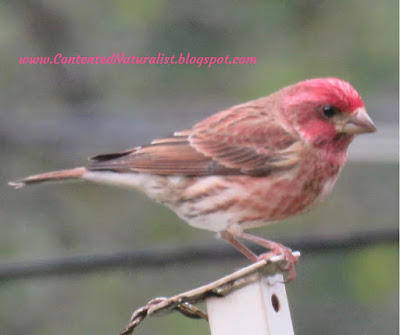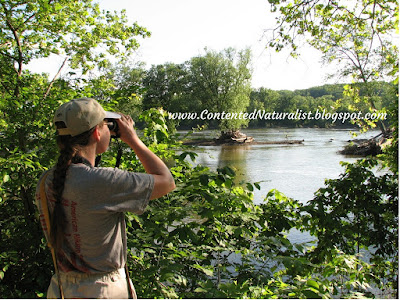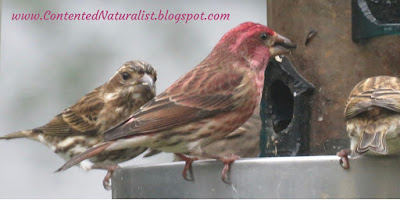 |
| One of the Purple Finches that arrived in my yard recently |
 |
| Birding at the C & O Canal this summer |
For me the thrill of seeing a new species for the year, for the season, or even the first time in my life can last for days. I use eBird to track the number of different species I see each year, as well as my lifelong sightings.
The reason I longed for a Purple Finch in my yard is their infrequent visits to my area. They’re not rare overall, but they don’t make it to the DC area every year, to say nothing of my own neighborhood & yard. I have house finches in my yard all year, including numerous youngsters begging food from their parents in the late summer. Purple Finches, however, spend the warmer months much farther north—in Canada and northeastern U.S. They only venture as far south as DC in the wintertime, if at all.
 |
| A White-throated Sparrow from last winter |
Other birds also come to my area only in the winter, like Dark-eyed Juncos and White-throated Sparrows. But while these birds are regular and reliable winter residents, the Purple Finches don’t always show up here. Their winter movements depend in large part on the size of the cone crop in their Canadian breeding grounds. How good a year conifers like pines, firs, and spruces had affects the amount of food available if the birds stayed north for the winter. In poor years for conifer seeds, we mid-Atlantic birders have a much better chance of seeing uncommon winter visitors like the Purple Finch and Pine Siskin. Ornithologist Ron Pittaway makes an annual winter finch forecast to help birders know whether they can expect movements of these longed for species. The summer of 2018 was a poor cone crop, according to Pittaway’s report, and indeed Purple Finches have been seen all over the midAtlantic region, including my yard. For once, examining every finch at my feeders paid off!
 |
| The Purple Finches were pretty hungry when they arrived. |
In fact, the Purple Finches arrived in my yard even before I saw many of my winter regulars like White-throated Sparrows and Dark-eyed Juncos. The first thing I noticed about them was the bright white line over the females’ eyes, called a supercilium. Females are brown and streaky, much like the female House Finch. Males of both species are washed with pinkish-purple. They also have a more intense supercilium as well as a darker stripe down the sides of their chin (called a malar stripe). On the Purple Finch, these stripes are pink, while the House Finch's marks are brown. I had to double-check in both Peterson and Sibley field guides to make sure, but yes indeed, I finally had my Purple Finch! The Cornell Lab of Ornithology's Project Feederwatch has a very helpful description of Purple Finch and House Finch field marks as well.
 |
| Female House Finch on the left, female Purple finch on the right. |
That was my 137th bird species for this year-- tantalizingly close to my goal of 150! Will more uncommon birds visit my yard this winter? I sure hope so. Have you seen any interesting birds this fall? I’d love to hear about them in the comments.